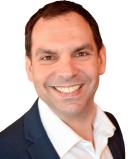Addiction
The Unhelpful Concept of Sex Addiction
Sex addiction is a popular buzzword, but is it clinically endorsed?
Posted September 28, 2021 Reviewed by Abigail Fagan
Key points
- The concept of 'sex addiction' is an invented one and is not scientifically endorsed.
- Clinicians relying solely on 'sex addiction' for their income have an investment in perpetuating the concept.
- Contemporary sexology offers a paradigm shift in understanding sexual compulsivity better and offering better care for clients.

Most people have heard of the term 'sex addiction.' It has been around since the ’80s and is associated with sensational stories of celebrities booking themselves into a 'sex addiction' clinic after being caught for bad sexual behaviours, some of whom have committed a sexual offence.
Before the term ‘sex addiction’ became popular, the psychoanalytic profession in Freud’s time observed sexual behaviours that looked out of control using diagnoses such as ‘nymphomania’ for female behaviours and ‘satyriasis’ for male behaviours. Although psychoanalysts misunderstood human sexuality, they were curious about it.
A few decades later, in the early ’80s, the term ‘sex addiction’ took off. It was in the particular backdrop of the AIDS epidemic, a dark time when the entire world was afraid of sex. Gay men were mostly pathologised as they were the ones most affected by the virus but also because their sexual promiscuity (or their freedom of sexual expression, as I would prefer to call it) became more visible when ‘homosexuality’ stopped being a criminal offence.
I don’t blame the experts calling sexual compulsivity an addiction in the early ’80s because these behaviours definitely looked like an addiction. People described their struggles as a strong urge resulting in repetitive and unwanted sexual behaviours that made them feel out of control. At the time, the field of sexology was almost non-existent and there was no other frame of reference apart from the addiction model to understand such complex sexual behaviours.
As soon as the term ‘sex addiction’ was invented, the entirety of the clinical thinking around sexual compulsivity was pushed into the same framework of known addictions such as alcohol and drugs. Experts tried very hard to make all their conceptualisations fit within the addiction model. This is when the field of ‘sex addiction’ started to become problematic: unlike psychoanalysts, there was no more curiosity. Experts wanted to maintain the certainty that the addiction-thinking was the only right one. Questions such as: Could it be something else? Could we have different conceptualisations? Might we have a blind spot? became forbidden, and clinical discussions became reductive.
Since the '80s, clinicians could only rely on the one and only ‘sex addiction’ model invented by a handful of experts. This model, however, was made from anecdotes and personal opinions, and no scientific backing, yet it remained unchallenged. Some of the reasons for not welcoming the questioning of the ‘sex addiction’ model were not clinical ones. One reason was to infiltrate a sex-negative and religious agenda to control sexual behaviours. The other reason was a financial one, as ‘sex addiction’ clinics started to make a lot of money charging exorbitant fees for their recovery centres in the USA.
Here, in the UK, we don't have a puritan culture but we do have a sex-negative one. When the 'sex addiction' concepts landed in the UK, it became Englishised, but its core addiction narrative remained.
The term ‘sex addiction’ is popular because it evokes emotive stories, and it is an easy fit for many people’s struggling with their heartbreak from sexual behaviours: ‘My partner cheated on me, he must be a sex addict’, ‘My partner enjoys looking at other people in the streets, she must be a sex addict’, ‘My partner wears revealing clothes that makes me uncomfortable, she must be a sex addict’, ‘My partner watches porn every night, he must be a porn addict’.
The clinicians whose income solely depends on treating ‘sex addiction’ have an investment in maintaining the narrative of the fear of sex so that people continue to come to their clinics and buy their treatments. Now that there is no more fear about AIDS, the ‘sex addiction’ narrative needed a new panic about their sexual behaviours. One of them is to conflate sexual compulsivity with sexual offending. The reality is much different: most people struggling with sexual compulsivity do so within consensual sexual boundaries and do not offend. Another current fear perpetuated by the ‘sex addiction’ field is the narrative of the ‘porn panic’. The so-called disorder of ‘porn addiction’ has not been clinically endorsed either, and much of its negative consequences (like porn causes erection problems) have been disproved. Although there is little scientific evidence, the fear-mongering stories abound.
‘Sex addiction’ trainings flourished too, teaching clinicians how to diagnose ‘sex addiction’ based on anecdotes, personal (and religious) beliefs and a major lack of understanding of gender, sex and relationship diversities. Therapists are trained in offering interventions that are primarily addiction-oriented helping their clients stop their so-called ‘sex addiction’ with hardly any knowledge of contemporary sexology. This is alarming because it means that many people who have normative (yet seemingly unusual) sexual behaviours may be unduly pathologised.
The tradition of addiction treatments is to recommend 12-step programmes, which may work very well for alcohol and drugs but is questionable for ‘sex addiction’ because there are so many sex-negative teachings that are incongruent with contemporary sexology. For example, the opinion of SAA and SLAA is that ‘sex addiction’ is a progressive disease and it is a character defect. This has never been endorsed by science. The ‘sex addiction’ movement deemed a vast amount of normative and functional sexual behaviours as ‘unhealthy’, which sends grossly inaccurate information to their followers. The ‘sex addiction’ field both in the USA and the UK pepper their treatment methods with overt or covert religiosity, promoting the power of prayers. Prayers are not used in any other psychotherapy treatments for depression, anxiety, eating disorders, trauma, OCD, self-harm, and so on, but it is prevalent in ‘sex addiction’ treatments.
The field of sexology has grown exponentially in the last 10 years, and we have now a larger body of research looking into sexual compulsivity. The results are clear: scientific data has not been able to confirm the existence of ‘sex addiction’, which is why both WHO and the DSM-5 consistently reject the conceptualisation of ‘sex addiction’. In 2018, the ICD-11 (WHO) came up with ‘compulsive sexual behaviour disorder’, clearly stating that it is not an addiction disorder but an impulse control disorder.
Now that we have the knowledge of contemporary sexology, clinicians need to take more responsibility for their interventions and recommendations as it can be harmful to offer addiction treatment for a problem that is not an addiction.
Amongst sex researchers and sexology scientists worldwide, the language of ‘sex addiction’ is disappearing fast, but amongst counsellors, psychotherapists and sex therapists in the USA and UK the term is still used widely. It is time for our profession to follow the scientific path of contemporary sexology because we have a duty to continue to be curious about clinical excellence and, ultimately, for the safe and ethical service to our clients.




